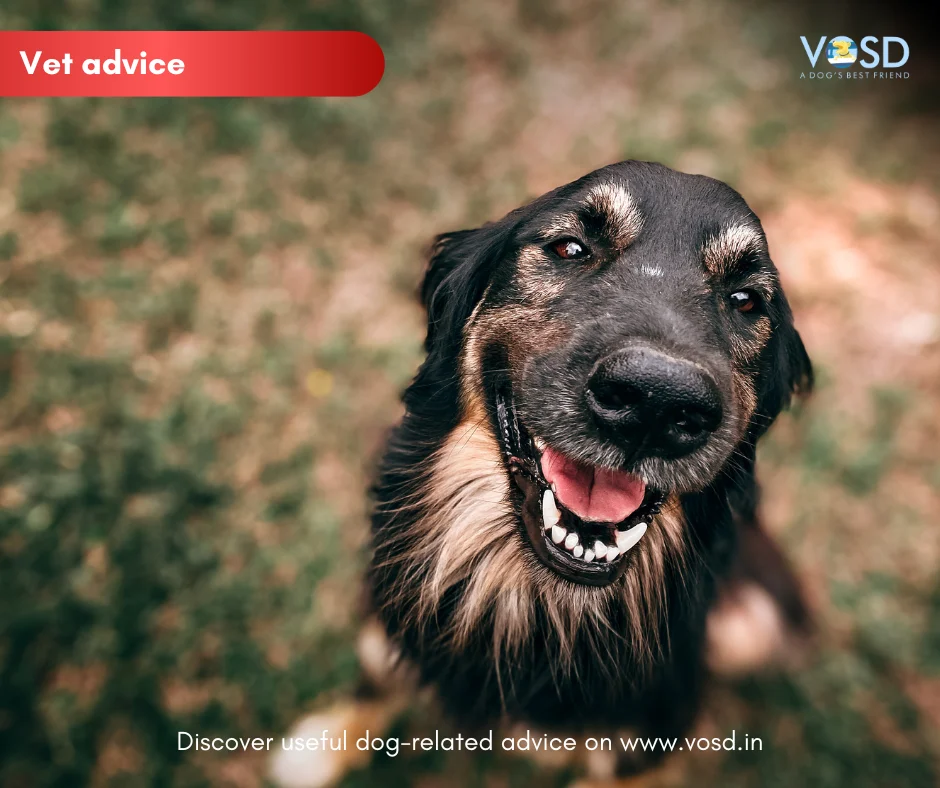Preventive care for pet dogs is crucial for maintaining their overall dog health and well-being. Just like humans, dogs benefit from regular check-ups, vaccinations, and preventive measures to detect and address potential health issues early on. We present to you vet advice for dogs in the following article.
Annual Checkups and vaccinations for Dog Health
Core vaccines for dogs are vaccinations that are considered essential for all dogs, regardless of their lifestyle or environment. These vaccines protect against highly contagious and potentially serious diseases. Commonly recognized core vaccines are Canine Distemper Virus (CDV), Canine Parvovirus (CPV), Canine Adenovirus Type 2 (CAV-2) and Rabies Virus.
Importance of getting yearly physical exams for Dog Health
Yearly physical exams for dogs are crucial for maintaining their overall health and well-being. Here are some key reasons highlighting the importance of getting yearly physical exams for dogs:
1.Regular physical exams allow veterinarians to detect potential health problems early. Early intervention can often lead to more successful treatment and better outcomes. Detecting issues such as dental problems, arthritis, or organ dysfunction early can prevent them from becoming more severe.
2. Yearly exams provide an opportunity to ensure that your dog’s vaccinations are up-to-date.
4. Regular exams help monitor and manage parasites such as fleas, ticks, and worms.
5. Veterinarians can provide guidance on your dog’s diet and nutritional needs during yearly exams.
6. For older dogs, yearly exams become even more critical as they age. Senior dogs may develop age-related conditions such as arthritis, cognitive dysfunction, or organ dysfunction.
Dental Health
Maintaining good dental health in dogs is essential for their overall well-being. Dental problems can lead to discomfort, pain, and other health issues if left untreated. To keep your canine companion’s teeth in good condition, aim to brush your dog’s teeth at least 2-3 times a week. Use a toothpaste specifically formulated for dogs. Choose a soft-bristled toothbrush or a finger brush designed for dogs. Professional cleanings may be necessary to remove tartar buildup.
Parasite Prevention
Parasite prevention is a crucial aspect of maintaining the health and well-being of dogs. Common parasites that affect dogs include fleas, ticks, mites, intestinal worms (such as roundworms, hookworms, and tapeworms), and heartworms. Implementing a comprehensive parasite prevention plan is essential to protect your canine companion.
Medication to prevent heartworm, fleas and ticks for Dog Health
Several medications are available that provide comprehensive protection against heartworms, fleas, and ticks in dogs. It’s important to note that these medications come in various forms, such as oral tablets, topical solutions, or collars. Some parasite control medicines are as follows: Heartworm Prevention: Ivermectin, Milbemycin oxime
Flea and Tick Control: Lufenuron (for flea control), Spinosad (for flea control), Sarolaner (for tick and flea control). Fipronil (for flea control), Imidacloprid (for flea control), Permethrin (for tick and flea control); Heartworm Prevention: Ivermectin and pyrantel pamoate combination, Milbemycin oxime and lufenuron combination. Afoxolaner (for flea and tick control), Fluralaner (for flea and tick control).
Proper Nutrition
Establishing a regular and consistent feeding schedule is important for the health and well-being of your dog. The specific feeding schedule may vary based on factors such as your dog’s age, breed, size, activity level, and health status.
Puppies usually need to be fed 3-4 times a day. Small and toy breeds may require more frequent meals. Gradually transition to feeding three times a day. Many dogs can transition to being fed twice a day. Some larger breeds may benefit from remaining on three meals a day to reduce the risk of certain health issues. It’s important to maintain a consistent feeding schedule.
Choosing quality food
Look for a high-quality source of protein as the first ingredient. Whole, identifiable ingredients like brown rice, sweet potatoes, and vegetables are positive indicators. Dogs are carnivores, and protein is essential for their overall health. Ensure that the dog food has adequate protein content. Healthy fats are important for your dog’s energy, coat health, and overall well-being. Look for natural preservatives like tocopherols (vitamin E) or ascorbic acid (vitamin C).
Avoiding table scraps is generally recommended for several reasons, as feeding dogs human food can lead to various health issues and unwanted behaviors. Dogs have specific dietary requirements, and their nutritional needs are different from humans. Feeding table scraps may not provide a balanced and complete diet, potentially leading to nutritional deficiencies or imbalances.
Exercise for Dog Health
The recommended duration and types of exercises for dogs depend on various factors, including the dog’s age, breed, size, health status, and overall energy level. Puppies have lots of energy, but their bones and joints are still developing. Short, controlled play sessions are recommended. On average, adult dogs benefit from 30 minutes to two hours of exercise per day, depending on the breed and energy level. Regular walks are suitable for most dogs and provide mental stimulation. Older dogs may have reduced energy levels, so exercise should be adapted to their individual needs.
Benefits of exercise for Dog Health
Regular exercise offers numerous benefits for both the physical and mental well-being of dogs:
- Exercise helps build and maintain strong, healthy muscles.
- Regular activity contributes to weight control and can prevent obesity-related health issues.
- Cardiovascular exercise, such as running or brisk walking, promotes a healthy heart and circulatory system.
- Regular movement and exercise maintain joint flexibility.
- Weight-bearing exercises help prevent issues like arthritis and hip dysplasia.
- Dogs that engage in regular exercise are less likely to exhibit destructive behaviors resulting from excess energy.
- Exercise provides mental stimulation, reducing boredom and preventing destructive behaviors.
- Activities such as group walks, visits to dog parks, or playdates offer opportunities for socialization with other dogs.
- Exercise can be a bonding activity between dogs and their owners, strengthening the human-animal bond.
- Regular exercise contributes to a dog’s overall health and may contribute to a longer, healthier life.
- Regular exercise can contribute to better sleep quality, ensuring dogs get the rest they need.
Different dog breeds have varying exercise needs based on factors such as size, energy level, and breed characteristics.
High-Energy breeds such as Labrador Retrievers require 60-90 minutes of moderate to high-intensity exercise per day.
Medium-Energy breeds like Beagles require 30-60 minutes of moderate exercise per day. Daily walks, playtime, and moderate games.
Low-Energy breeds like Basset Hound, Shih Tzu, Bulldog need 15-30 minutes of light to moderate exercise per day.
Herding breeds like German Shepherds need 60-90 minutes of mental and physical exercise. Agility training, obedience training, herding activities.
Working breeds like Siberian Huskies need 45-60 minutes of moderate to high-intensity exercise. Running, pulling, obedience training, and challenging tasks.
Toy breeds like Pomeranians need 15-30 minutes of light play and short walks. Indoor play, short walks, and interactive toys.
Tailor the exercise routine based on your dog’s health conditions. Dogs with arthritis, hip dysplasia, or heart conditions may need modified or restricted exercise.
Grooming
Trimming your dog’s nails is an important aspect of grooming that helps maintain their overall health and well-being. Long nails can cause discomfort, affect your dog’s gait, and may lead to various issues, including ingrown nails or injuries. Choose the appropriate type of nail clippers for your dog’s size and nail thickness. Use styptic powder or gel in case you accidentally cut into the quick (the sensitive part of the nail that contains blood vessels).
Use treats to reward and reassure your dog during and after the nail-trimming process.
Brushing coat
Brushing your dog’s coat is an essential part of grooming that helps maintain their skin and coat health, reduces shedding, and prevents matting. Choose the appropriate brush or comb for your dog’s coat type. Be gentle when brushing around sensitive areas such as the ears, paws, and belly. While brushing, check for signs of fleas or ticks, and use a flea comb if needed.
Cleaning face and eyes
Cleaning your dog’s face and eyes is an important part of regular grooming to prevent tear stains, remove debris, and maintain good hygiene. Use specially formulated dog eye wipes or a veterinarian-recommended eye-cleaning solution. If using a solution, have a soft cloth or cotton balls ready for application. Use treats or rewards to make the experience positive. If your dog is not used to having their face cleaned, introduce the process gradually.
If your dog has tear stains, pay extra attention to this area. Wipe away any accumulated moisture or debris, being careful not to touch the eyes. Be gentle and avoid direct contact with the eyes. If you notice excessive tearing, redness, or other signs of irritation, consult with your veterinarian.
Conclusion
Prevention is always better than cure, so be sure to follow the vet advice for dogs mentioned above religiously. You will find that your dog stays in the very best of health if his vaccinations are administered in a timely manner and their dental health, grooming, nutrition, exercise needs are prioritized. They should also be kept free of ticks and fleas and other parasites and are taken to vets for check-ups annually.





